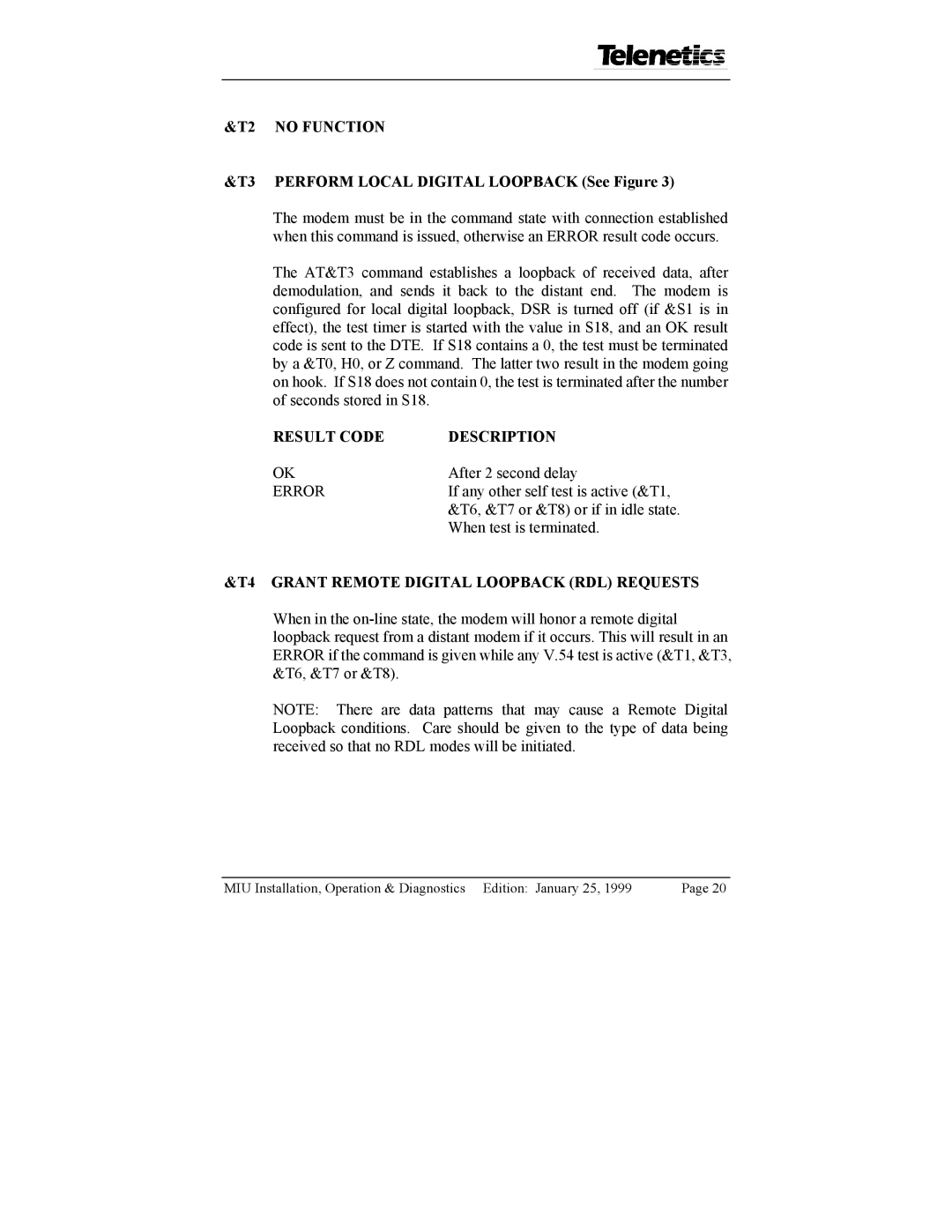
&T2 | NO FUNCTION |
|
&T3 | PERFORM LOCAL DIGITAL LOOPBACK (See Figure 3) | |
| The modem must be in the command state with connection established | |
| when this command is issued, otherwise an ERROR result code occurs. | |
| The AT&T3 command establishes a loopback of received data, after | |
| demodulation, and sends it back to the distant end. The modem is | |
| configured for local digital loopback, DSR is turned off (if &S1 is in | |
| effect), the test timer is started with the value in S18, and an OK result | |
| code is sent to the DTE. If S18 contains a 0, the test must be terminated | |
| by a &T0, H0, or Z command. The latter two result in the modem going | |
| on hook. If S18 does not contain 0, the test is terminated after the number | |
| of seconds stored in S18. |
|
| RESULT CODE | DESCRIPTION |
| OK | After 2 second delay |
| ERROR | If any other self test is active (&T1, |
|
| &T6, &T7 or &T8) or if in idle state. |
|
| When test is terminated. |
&T4 | GRANT REMOTE DIGITAL LOOPBACK (RDL) REQUESTS | |
| When in the | |
| loopback request from a distant modem if it occurs. This will result in an | |
| ERROR if the command is given while any V.54 test is active (&T1, &T3, | |
| &T6, &T7 or &T8). |
|
NOTE: There are data patterns that may cause a Remote Digital Loopback conditions. Care should be given to the type of data being received so that no RDL modes will be initiated.
MIU Installation, Operation & Diagnostics Edition: January 25, 1999 | Page 20 |
